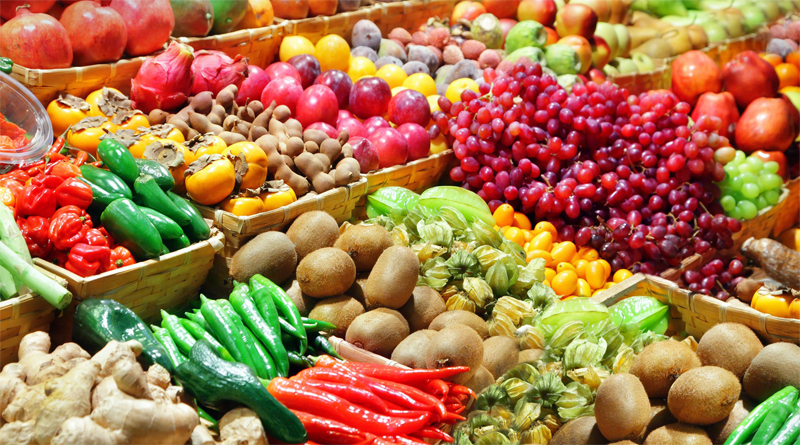Food waste, digital and online innovations and consumer values are expected to drive some of the major food and nutrition trends in 2018, according to the International Food Information Council (IFIC) Foundation. And the concept of savvy consumers making mindful choices stands out as a key trend for this year, which follows on from the 2018 trend forecast by Innova Market Insights as published in FoodIngredientsFirst late last year, where the market researcher predicts that as number one on the list, “Mindful Choices,” will thrive this year.
The non-profit IFIC Foundation – which aims to communicate science-based information on health, food safety and nutrition for the public good – has identified several hot topics for the New Year using data from its in-house survey research and health professional expertise, along with other data and observations.
“The rise of the connected consumer and technological advances will help redraw the food landscape in 2018,” says Joseph Clayton, CEO of the IFIC Foundation. “As our values move to the forefront in our decisions about what to purchase and consume, we will find a marketplace that is enhanced by innovation and is more aligned with our individual needs and desires.”
The focus on mindful choices certainly echoes the #1 trend cited by Innova Market Insights.
The increasingly thoughtful and mindful consumer will continue to catalyze changes in the way companies produce, package and label their products. The other element driving the “mindful choice” trend involves ethical claims, which feed into consumers’ peace of mind while making a positive impact on the world.
There has been a +44 percent CAGR in ethical claims (2010-2016, global), which includes ethical animal/ human/environment [excluding ethical packaging]. According to Innova Market Insights consumer research, four in 10 US and UK consumers have increased their consumption of “healthy foods,” while seven in 10 want to know and understand the ingredient list.
In addition, one in five in the US are most influenced by “real” ingredients and ethical claims on the packaging are top of mind. In response, better-for-you claims continue to be on-trend, having increased their market penetration from 42 percent in 2012 to 49 percent in 2017 YTD.
Lu Ann Williams, Director of Innovation at Innova Market Insights says: “This whole idea of consumers paying more attention to what they eat is really important in today’s industry and that’s why our first trend is about the mindful consumer.”
“We are still conscious of protein and clean label. But at the same time, we wanted to progress and talk about what comes after that. Those things are never going away and they are actually really related to things that are happening,” she says.
“Healthy foods are widely accepted and finding the right balance in food choices is important. People are much more aware and paying attention to everything they eat.”
“Trends reflect how consumers have evolved over the years and now they are being sensible when it comes to food choices. Products are being simplified and becoming easier to understand for the mindful consumer,” she adds.
What are IFIC Foundation top trends to watch out for in 2018?
Waste not, want not
By some estimates, about 40 percent of food produced for our consumption never reaches a human stomach. IFIC Foundation research suggests that food waste is both an educational challenge and opportunity among consumers that more players in the food system appear poised to embrace, with food purveyors stepping up their own commitments to address the problem.
Growing awareness and concern about sustainability in general and the impacts of food waste in particular – environmental, economic, humanitarian – are indicative of broader interest in food values.
Seafood sustainability is a specific area of concern, as consumers better appreciate the health benefits of seafood but also want it to be produced responsibly and sustainably.
This is also backed up by another of Innova Market Insights’ 2018 trends, “Ocean Garden,” which came in at #9 in its forecast. The market researcher notes how the industry is looking towards the sea as a source of ingredients and more holistic nutrition inspiration.
“Boom” goes the internet: Virtual shopping is an increasing reality
The volume of food purchased online and via apps is tipped to soar, according to IFIC Foundation.
While the food sector, as a whole, notes relatively modest gains year over year, business is booming online. There are more ways than ever before to buy groceries.
New players and familiar retailers are rushing to meet the demand.Vertical integration and consolidation, along with the startup culture and a strong economy, will yield new choices and added convenience for consumers.
Some of the key trends include more diversity and continued evolution in home-delivered meal kits; the use of connected, voice-controlled digital assistants to facilitate consumer decisions and purchases; the increasing speed of food deliveries with a wider variety of options from packaged to perishable; and even recipes on demand.
Hanging around the block(chain)
“Blockchain” is an emerging buzzword in the digital realm. The technology leverages data to improve business efficiencies and supply chains and it holds great promise for the food system, especially food safety.
Harvard Business Review calls it a “foundational technology” that is poised to remake many of our financial and social transactions and industries.
Last month the RaboResearch report “Blockchain: The Trigger for Disruption in the Food Value Chain” detailed how companies that want to remain successful in the future food value chain should start to explore options for participating in blockchain initiatives in order to help them lower costs, increase efficiencies, offer sustainable products and explore opportunities for creating new value. Read more here.
Nutrigenomics: The impacts of food at the molecular level
Nutrigenomics, broadly speaking, studies how our diets influence our genes. A growing body of evidence and scientific interest in the field have put us on the brink of revolutionary advances in personalized nutrition.
Nutrigenomics has begun giving us answers about why people respond differently to different diets – especially why some people and not others become obese – which are factors that have long bedeviled nutrition research. New insights will help improve the quality of future scientific studies, not to mention the quality of our diets and health, says IFIC Foundation.
Flavor Savorers take a walk on the wild side
Taste has been the top driver of Americans’ food purchases for the entire history of the IFIC Foundation’s annual Food and Health Survey. In 2018, our palettes will be treated to ever more exotic and esoteric options, it says.
Restaurants and retailers in urban areas, in particular, are seeing the proliferation of choices from areas in the world where taste is abundant but Americans’ familiarity is lacking. As social media and our daily lives become more and more inextricable, expect to see your friends and family chasing the “next big thing” when it comes to flavors.
Recently FoodIngredientsFirst spoke to several leading flavor specialists who looked ahead to the flavor trends to watch out for in 2018. Among trends predicted to make waves this year include bold and complex tastes, global inspiration and the fact that consumers are craving multi-sensorial experiences. Meanwhile floral, herbal, botanical and fruit will also be moving forward. Read more on the Special Report here.
Less is more: Clean labels and clean packaging
While the clean label movement will reach new heights, the food system will continue to grapple with exactly what the term means and how it will affect claims being made about foods.
In a possible backlash to label clutter, including the proliferation of certifications, as well as marketing and health claims, some food producers are developing minimalist packaging to help set them apart and reduce consumer confusion.
Innova Market Insights also agrees that clean label has established itself as a true driving force that will only continue. Data shows that products with clean label claims accounted for 26 percent of new global food & beverage launches in 2016, with 16 percent CAGR in introductions with these claims in recent years (2012-2016).
Source: Food Ingredients First










